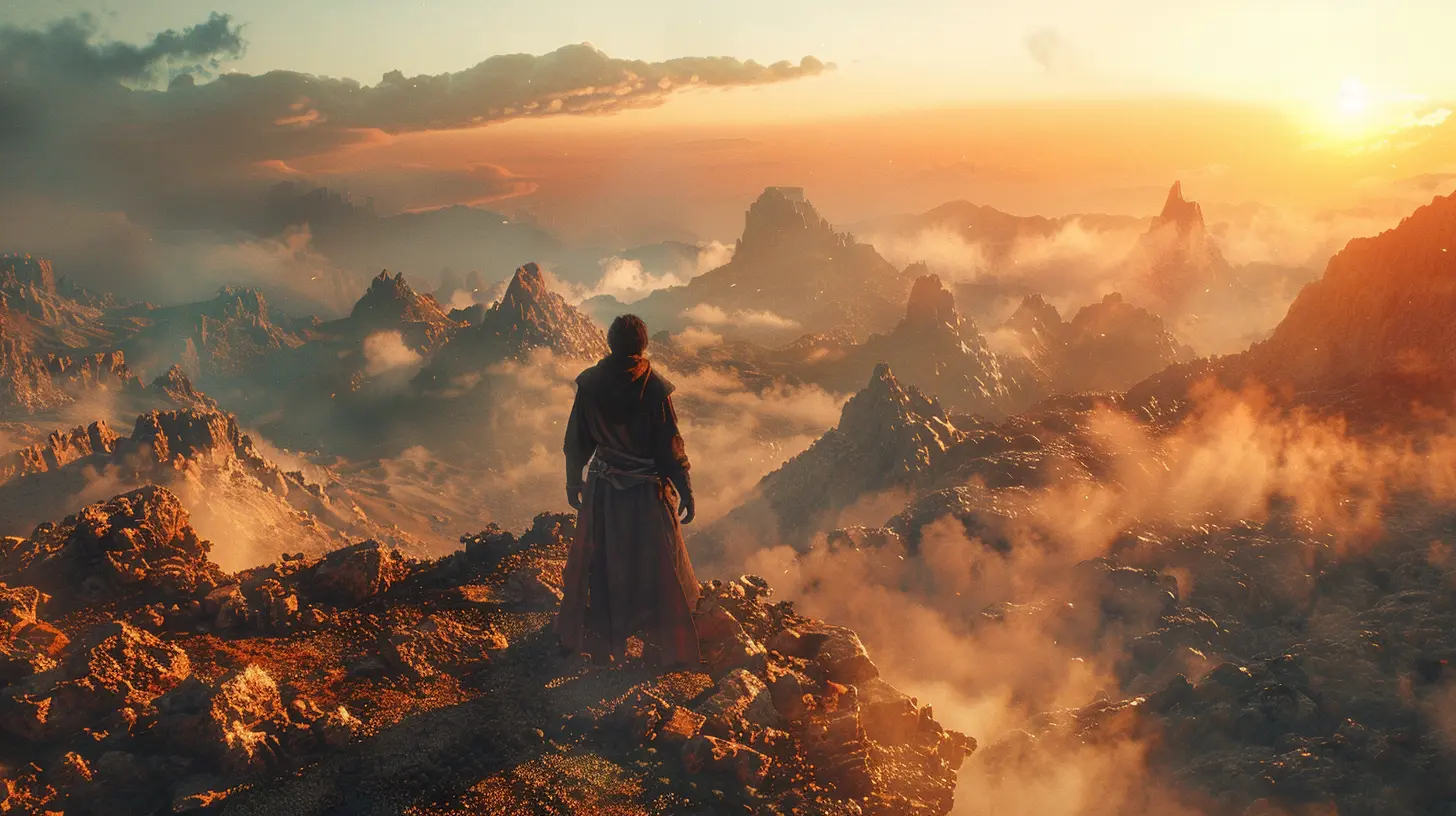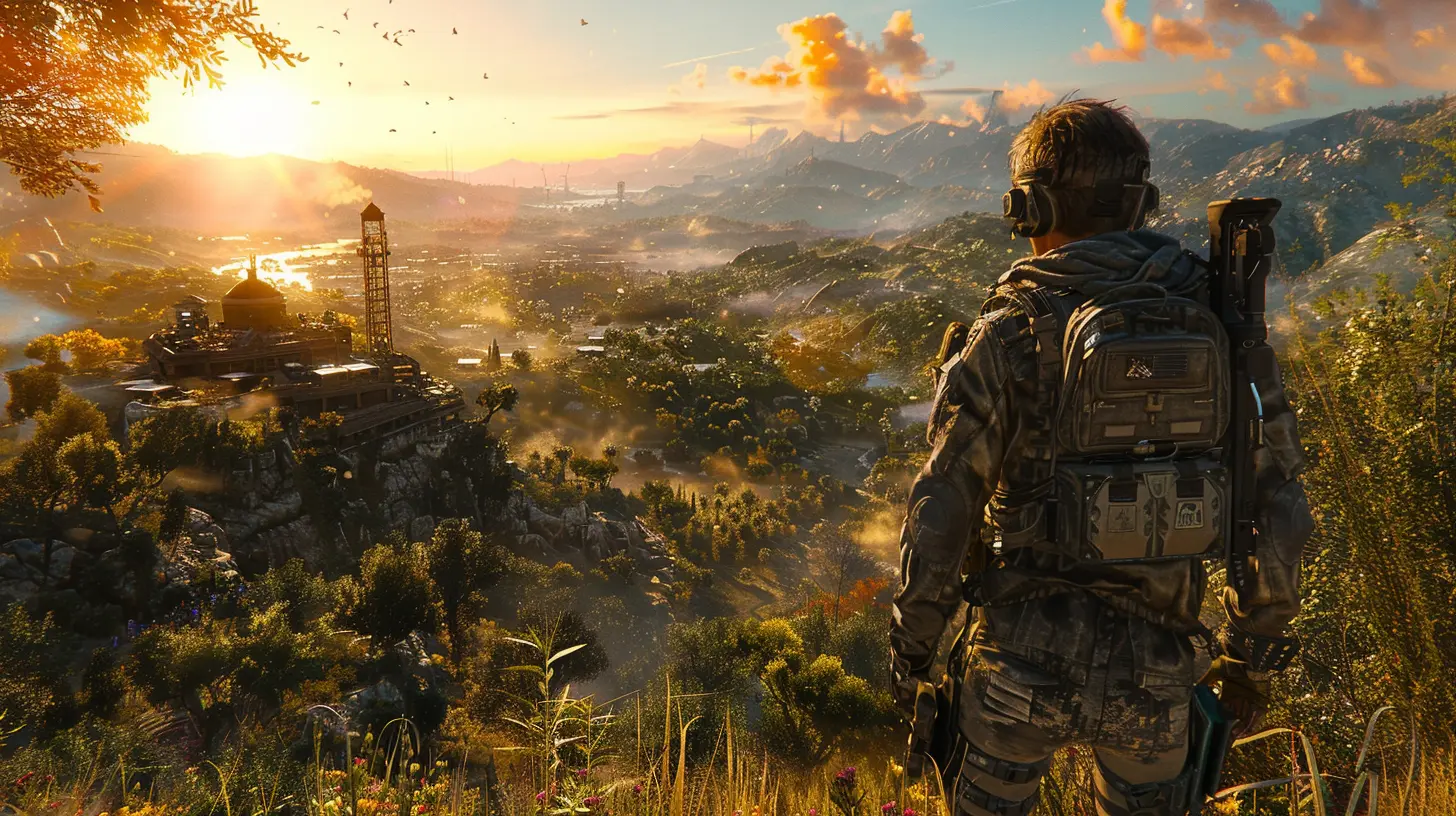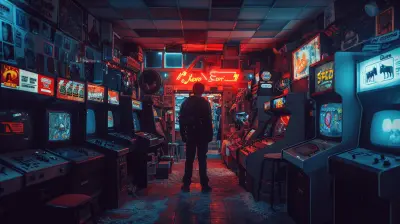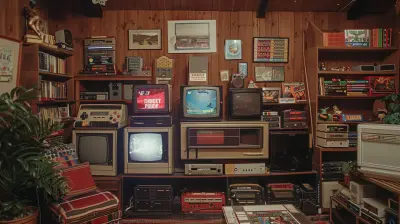12 March 2025
When was the last time you played a game and stopped to admire the graphics? The crisp textures of the environment, the lifelike characters, and the overall polish of the visuals all come down to two critical factors: resolution and image quality. These elements are the unsung heroes of modern gaming, making our favorite titles immersive and jaw-droppingly beautiful.
But have you ever wondered what resolution and image quality really mean? Why are they so important? And how do they impact your gaming experience? If you’re scratching your head, don’t worry—you’re not alone. Let’s break it all down in simple terms, so by the end of this article, you’ll be well-equipped to understand why resolution and image quality are such big deals in gaming.
What is Resolution and Why Does It Matter?
Let’s start with the basics. Resolution is essentially the number of pixels displayed on your screen. Think of pixels as tiny dots that work together to create the images you see. The more pixels your screen can display, the sharper and more detailed the image will look.Common Resolution Standards
Here are some common resolutions you’ve probably heard of:- 720p (HD): Often called "HD ready," this is the minimum for modern gaming.
- 1080p (Full HD): A fan-favorite and the sweet spot for casual gamers.
- 1440p (QHD or 2K): A step up, popular for high-refresh-rate monitors.
- 4K (UHD): Ultra-high definition, delivering unparalleled detail.
- 8K: The latest frontier, but let’s be honest—how many of us have an 8K setup?
Now, imagine playing your favorite game in 720p versus 4K. The difference is night and day, right? Think of resolution as the foundation of your visual experience. A higher resolution makes everything—from that distant mountain to the intricate design on your character’s armor—look stunningly lifelike.
Image Quality: More Than Just Pixels
If resolution is the number of pixels, image quality is how those pixels are presented. It encompasses a variety of factors like textures, lighting, shadows, anti-aliasing, and post-processing effects. In simple terms, it’s the secret sauce that brings those pixels to life.Key Elements of Image Quality
- Textures: These are the surface details of objects. A high-quality texture might show the roughness of a brick wall or the delicate patterns on fabric.- Lighting: Ever noticed how realistic shadows and light reflections make a game feel more immersive? That’s because of advanced lighting techniques like ray tracing.
- Anti-Aliasing (AA): This minimizes jagged edges, making everything look smooth and polished.
- Post-Processing Effects: Think bloom, motion blur, and depth of field. These add cinematic flair to games.
Take a moment to picture this: Resolution is like the canvas of a painting, while image quality is the skill of the artist and the quality of their tools. Together, they create a masterpiece.
Why Resolution and Image Quality Go Hand-in-Hand
Here’s the thing—resolution and image quality are like two sides of the same coin. You can have a 4K display, but if the game has poor textures or lighting, it’ll still look underwhelming. On the flip side, even the best image quality can’t save a game running on a low resolution.It’s a balancing act. Higher resolutions demand more from your hardware, which can sometimes mean sacrificing image quality to maintain a playable frame rate. This is why many gamers tweak their settings to find the perfect balance that suits their system.
How Resolution and Image Quality Impact Your Gaming Experience
Alright, let’s talk about the stuff that really matters—how these technical aspects actually affect your experience.Immersion
Ever felt completely absorbed in a game world? That’s immersion, and it’s directly tied to resolution and image quality. Higher resolutions and better textures make everything feel real, pulling you into the story and gameplay.Competitive Edge
If you’re into competitive gaming, you probably know this already—clarity is king. A sharper image helps you spot enemies faster, track objects more easily, and react quicker. Imagine trying to snipe someone in a game with a blurry, low-resolution screen. Frustrating, right?Eye Strain
Here’s something many people overlook: Poor image quality can lead to eye strain, especially during long gaming sessions. A crisp, clean display is easier on your eyes, making gaming more enjoyable.Longevity of Gear
Investing in a high-resolution monitor or TV isn’t just about the “now.” As games continue to push the visual envelope, future-proofing your setup ensures you won’t be left behind.The Hardware Factor: Can Your Setup Handle It?
Let’s not sugarcoat it—higher resolution and better image quality demand better hardware. If you’re gaming on a potato of a PC or an outdated console, you might have to dial back some settings.Graphics Cards (GPUs)
Your GPU is the workhorse behind those jaw-dropping visuals. A mid-tier GPU can handle 1080p gaming with decent image quality, but for 4K gaming with all the bells and whistles, you’ll need a beast of a card.Monitors and TVs
What’s the point of running a game in 4K if your screen doesn’t support it? Make sure your display can handle the resolution and refresh rate you’re aiming for.CPU & RAM
Don’t forget about your CPU and RAM—these play a supporting role in ensuring smooth performance. A bottleneck in these areas can limit what your GPU can achieve.The Cost of Visual Brilliance
There’s no denying it—pushing for higher resolution and image quality comes at a price. It’s not just about the initial cost of upgrading your setup; higher settings also mean increased power consumption and heat generation. And let’s not even get started on the storage space that ultra-high-resolution textures take up.But here’s the good news: You don’t always need to max out every setting. Many games offer customization options, letting you prioritize what matters most to you—whether it’s framerate, resolution, or specific graphical effects.
Striking the Right Balance: Tips for Gamers
Not everyone can afford the latest hardware or play at 4K with ultra settings. And that’s okay! Here are some practical tips to get the most out of your setup:1. Start with Presets: Most games offer settings like "Low," "Medium," "High," and "Ultra." Start with a preset and tweak individual options as needed.
2. Adjust Resolution Scaling: Many games allow you to run at a lower resolution but upscale the image to fit your screen—saving performance without sacrificing too much quality.
3. Prioritize Key Settings: Focus on big-impact settings like textures and anti-aliasing while dialing down less noticeable ones like shadows or water effects.
4. Monitor Your FPS: Use in-game tools or software to keep an eye on your framerate. A smooth 60 FPS with lower settings is often better than a stutter-filled 30 FPS with everything maxed out.
Wrapping It Up
So, why are resolution and image quality so important? Because together, they define how immersive, engaging, and satisfying your gaming experience can be. From the tiniest details in textures to the vast landscapes of open-world games, these two factors are the backbone of modern visual design.Sure, nailing the perfect balance can be tricky, especially without top-tier hardware. But even if you’re gaming on a budget, understanding how resolution and image quality work gives you the power to optimize your experience. After all, gaming isn’t just about playing—it’s about feeling like you’re part of another world. And trust me, nothing ruins that illusion faster than jagged edges or blurry textures.
So next time you’re tweaking those in-game settings or ogling a new monitor, remember: Resolution and image quality are more than just numbers—they’re the gateway to gaming nirvana.








Alyssa Alexander
Resolution matters, but let’s be honest—if it's not 4K, my pixels might just throw a tantrum!
March 31, 2025 at 2:52 PM